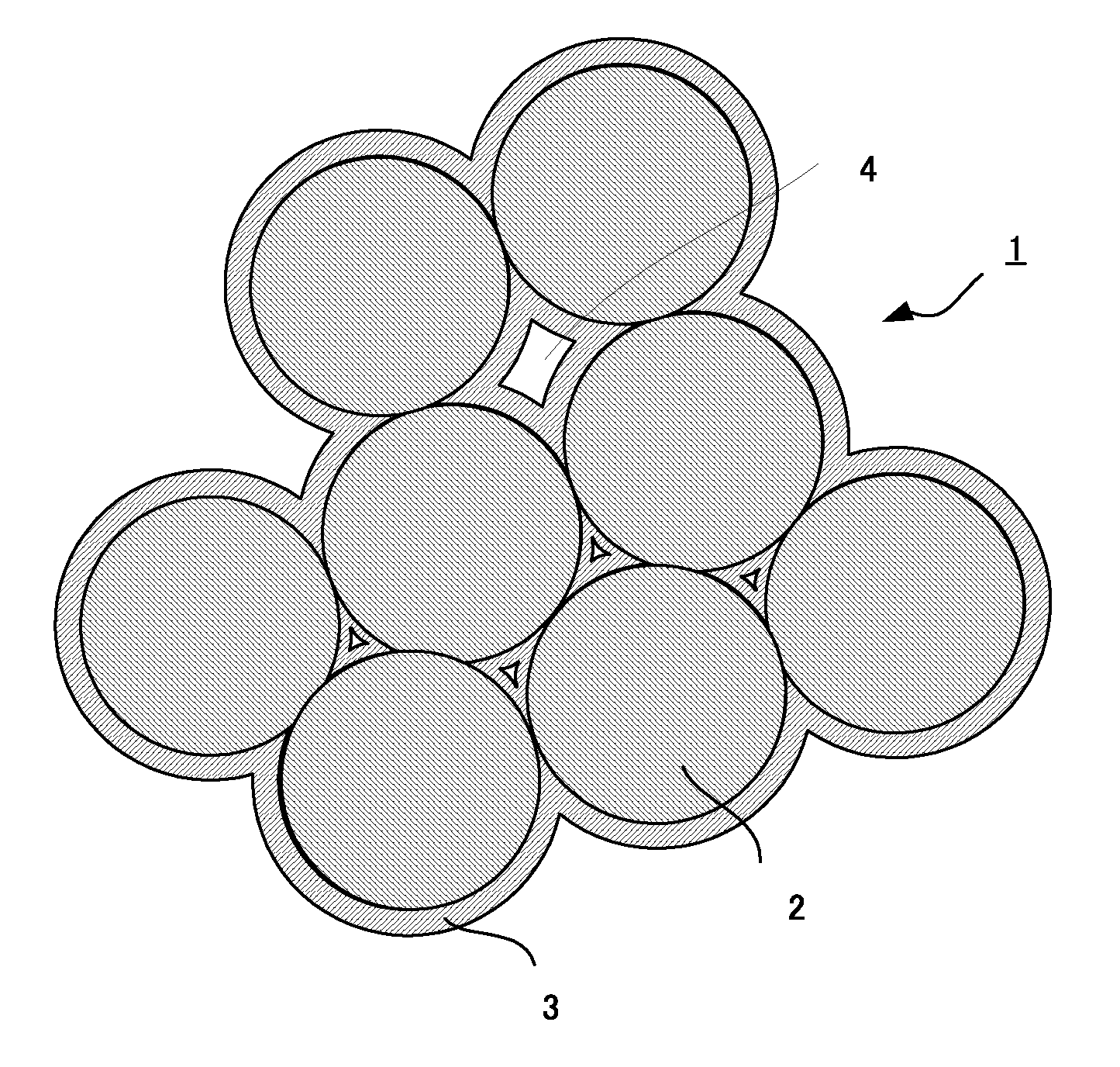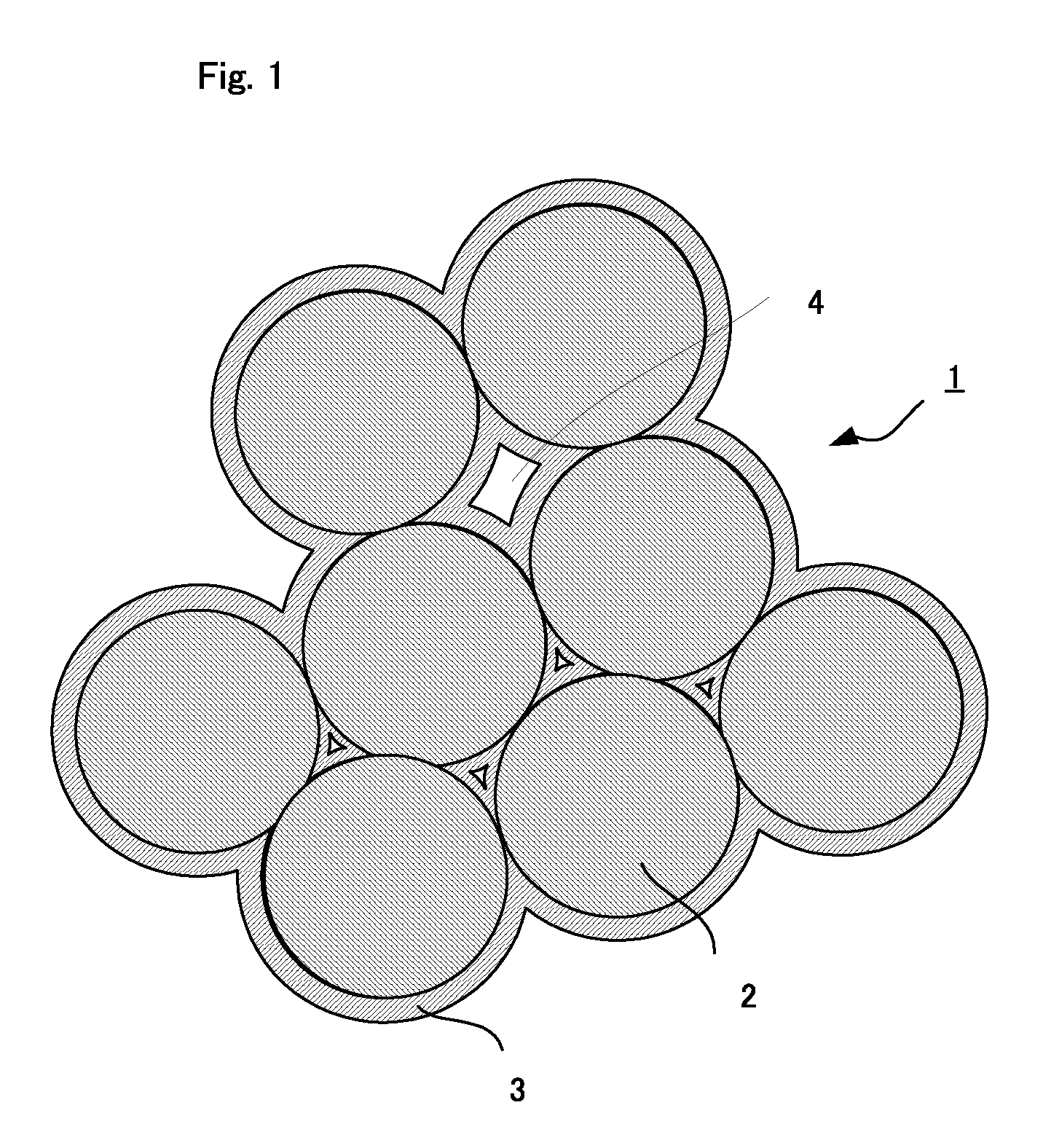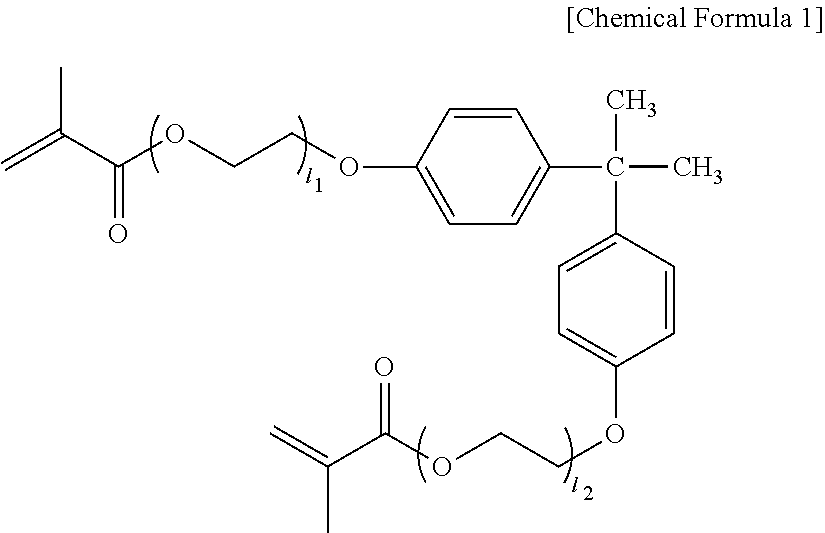Organic/inorganic composite filler and manufacturing method therefor
a technology of organic/inorganic composite filler and manufacturing method, which is applied in the field of organic/inorganic composite filler and the manufacturing method therefor, can solve the problems of increasing the viscosity of paste composite restorative material, reducing the surface smoothness or wear resistance of cured products, and difficult to obtain a cured product with a glossy finish surface like natural teeth, etc., to achieve good paste handling property, improve surface smoothness, wear resistance, and mechanical strength.
- Summary
- Abstract
- Description
- Claims
- Application Information
AI Technical Summary
Benefits of technology
Problems solved by technology
Method used
Image
Examples
example 1
[0160]One hundred g of inorganic particles F-1 were added to 200 g of water, and a dispersion of the inorganic particles was obtained by using a circulating bead mill SC Mill (manufactured by Mitsui Mining Company, Ltd.).
[0161]Subsequently, 4 g (0.016 mol) of γ-methacryloyloxypropyltrimethoxysilane and 0.003 g of acetic acid were added to 80 g of water, and stirred for 1 hour and 30 minutes, so that a uniform solution with a pH of 4 was obtained. The solution was added to the inorganic particle dispersion and mixed uniformly. Thereafter, while lightly stirred, the dispersion was supplied onto a disk rotating at high speed and dried by spray drying method.
[0162]The spray drier used had a rotary disk, in which atomization was performed by centrifugal force (Spray Drier TSR-2W, manufactured by Sakamoto Giken K.K.). The rotational speed of the disk was 10,000 rpm, and the temperature of the air of the drying atmosphere was 200° C. Subsequently, the spray-dried inorganic powder was vacuu...
example 2
[0166]Using the same process as in Example 1, 66 g of inorganic agglomerated particles were obtained, except that 70 g of inorganic particles F-2 and 30 g of inorganic particles F-3 were added to 200 g of water when a dispersion was obtained by using a circulating bead mill SC Mill. The intra-agglomerate voids of the resulting inorganic agglomerated particles had a pore volume of 0.20 cm3 / g and an average pore size of 35 nm. The inorganic agglomerated particles had an average particle size of 33.7 μm.
[0167]Subsequently, 8.1 g of an organic-inorganic composite filler was manufactured using the inorganic agglomerated particles by the same process as in Example 1. The intra-agglomerate voids of the organic-inorganic composite filler had a pore volume of 0.04 cm3 / g and an average pore size of 14 nm. The inorganic agglomerated particles had an average particle size of 34.2 μm, and it was also confirmed that the inorganic primary particles of the agglomerate particles had an average parti...
examples 3-16
[0168]Organic-inorganic composite fillers were obtained as in Example 1, except that the type of the inorganic particles used in the manufacturing of the inorganic agglomerated particles and the type and amount of the polymerizable monomers and the polymerization initiator in the polymerizable monomer solution were each changed as shown in Table 1, and the physical properties of each product were measured as in Example 1. The results are shown together in Table 1.
PUM
| Property | Measurement | Unit |
|---|---|---|
| particle size | aaaaa | aaaaa |
| pore sizes | aaaaa | aaaaa |
| particle size | aaaaa | aaaaa |
Abstract
Description
Claims
Application Information
 Login to View More
Login to View More - R&D
- Intellectual Property
- Life Sciences
- Materials
- Tech Scout
- Unparalleled Data Quality
- Higher Quality Content
- 60% Fewer Hallucinations
Browse by: Latest US Patents, China's latest patents, Technical Efficacy Thesaurus, Application Domain, Technology Topic, Popular Technical Reports.
© 2025 PatSnap. All rights reserved.Legal|Privacy policy|Modern Slavery Act Transparency Statement|Sitemap|About US| Contact US: help@patsnap.com



